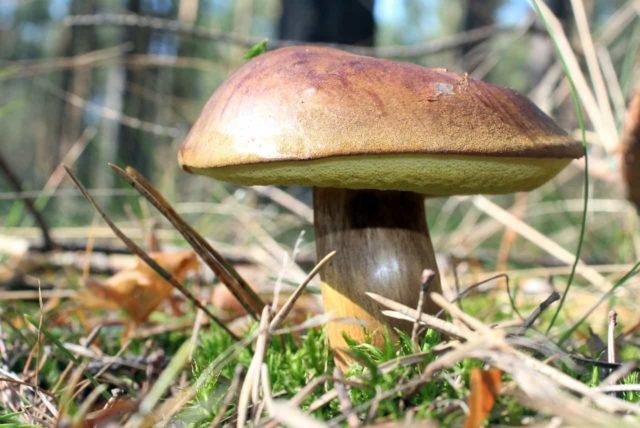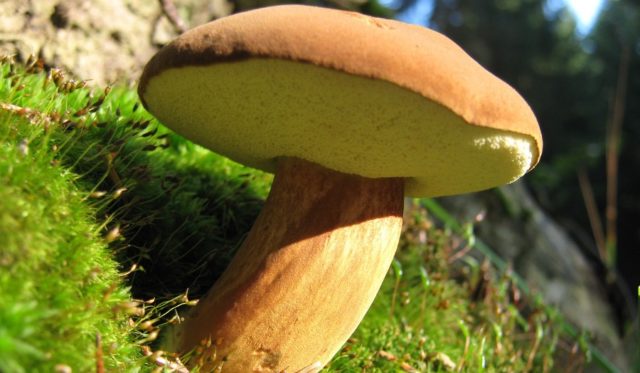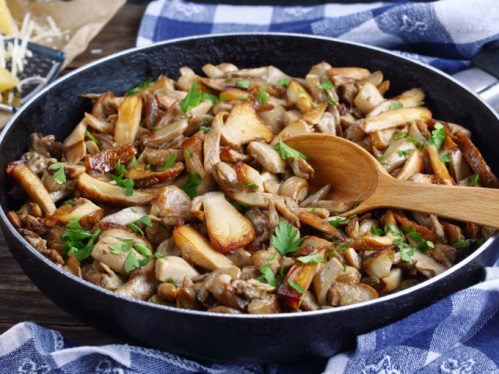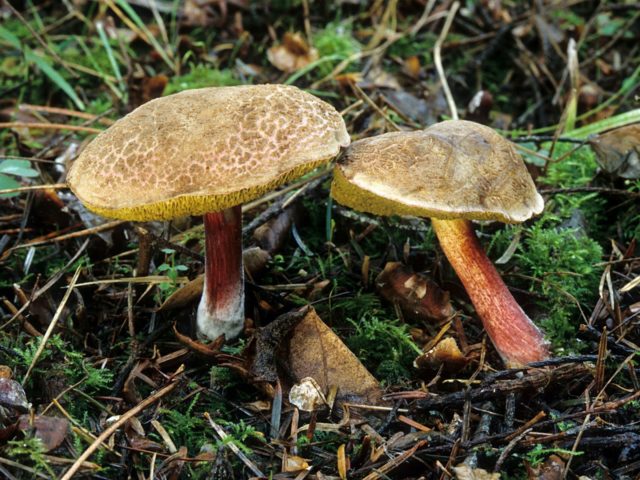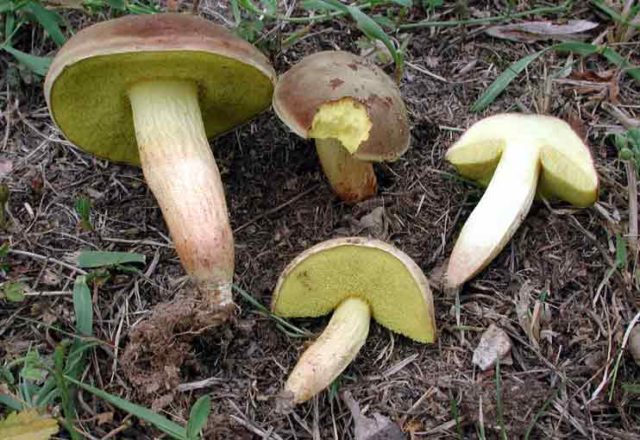Content
Polish boletus is an edible mushroom from the Boletov family. Many connoisseurs of a quiet hunt consider it a cheap delicacy available to everyone. It is very popular in Western Europe, but residents of the post-Soviet space have a slightly different opinion about it. Officially, it is not even included in the first category of edibility: it is believed that its taste can only be compared with boletus, but it is very far from porcini mushrooms. This species owes its name to enterprising Polish merchants who sold it practically throughout Europe, although it is found not only in Poland. Next, there will be a photo and description of the Polish boletus.
What does a Polish boletus mushroom look like?
This is a fairly large representative of the mushroom kingdom, the appearance of which is the best fit for the classical description of the mushroom, as it is depicted in children's books. The round cap has the correct shape, its diameter can be up to 15 cm.
The cap is convex, covered with a thin skin, which practically cannot be removed. It is dry to the touch, smooth, without mucus. After a little rain, the cap may be adhesive. Young fruit bodies have a matte white skin, adults brown and shiny. The color of the cap itself is dark yellow or chocolate brown.
The hymenophore has a tubular structure. It either grows to the leg, or does not reach 5-7 mm to it. In the latter case, a noticeable notch forms, such a cap becomes thinner.
The pulp contained in it is fleshy and dense. Its color is predominantly white or yellow-white. On the cut, the pulp may acquire a blue color, and after a while (up to 1 hour), the color changes to its original color.
The height of the leg reaches 12 cm, the thickness is no more than 4 cm. The leg most often has a cylindrical shape. In relatively rare cases, it may be slightly thickened at the top or bottom. The flesh at the stem is fibrous, slightly stiffer than that of the cap. The color is light brown or brown.
The spores of the Polish boletus have an ellipsoidal shape, they are honey-yellow, smooth. In this case, the color of the spore powder has an olive tint. The size of the spores is no more than 16 and 5 microns in length and width, respectively.
Where do Polish boletus mushrooms grow?
Mostly Polish boletus is found in temperate coniferous forests. But, since it is capable of forming mycorrhiza not only with conifers, but also with oak, beech, horse chestnut, etc., it can also be found in deciduous forests. It is guaranteed to be found in any spruce forest in Western and Central Europe.
Prefers sandy soils, although it can also tolerate loamy soil.On sandstones it occurs in the form of small colonies, on loams - mainly singly or 1-2 specimens. With great reluctance, it "settles" near dead trees and near stumps. It is almost impossible to meet a Polish boletus near the stump.
The homeland of the species is considered the east of Poland and the west of Belarus, but this is just one of the versions of its origin, which has a "commercial" background. In fact, it is very widespread in Europe, the North Caucasus, Western Siberia and the Far East. Representatives of the species can be found even in Azerbaijan and in the vicinity of Tyumen.
Polish boletus is edible or not
The mushroom belongs to the second category of edibility, it can be used in any form: boiled, fried, dried, salted, pickled. A feature of the mushroom is its rather long ripening period. In late autumn, when almost all Boletias are already running out, the Polish boletus is still found quite often.
Taste qualities of the Polish boletus mushroom
The "hat" pulp has a very strong mushroom smell, spreading over several meters, however, it does not repel, on the contrary, the Polish mushroom smells quite pleasant. Unfortunately, even with a slight heat treatment, the smell of Polish boletus almost completely disappears.
The subjective assessment of taste can vary greatly from source to source. And the point here is not only in the personal taste sensations of this or that expert. A beautiful and large Polish boletus looks as if it is able to compete with the "absolute top" in the world of mycology - porcini mushrooms. In reality, of course, this is not the case.
According to the classification, Polish boletus belongs to the flywheels and fully corresponds to this taste niche. Cooked in a special way, in some dishes it sounds like an ordinary boletus, sometimes approaching the taste of porcini mushroom, but never reaching it.
As for the taste and aroma of dried mushrooms (the main way of their use), then Polish boletus will not compete with both white and ordinary boletus. Unlike the abovementioned representatives, the aroma almost completely disappears during drying.
As for the usual dishes - fried mushrooms, mushroom soup or pickles, we can say that the Polish boletus in these dishes deserves a rating of 4.5 on a five-point scale. It retains the firmness of the pulp and its taste is considered very good. The discoloration of the stem and cap on the cut during heat treatment completely disappears. That is, you should not be afraid that the dish will turn red or blue when you add Polish boletus to it.
The benefits and harms of the Polish boletus mushroom
Like all mushrooms, the benefit of Polish boletus is that it contains a large amount of protein. Its energy value is quite high, and it is able to quickly satisfy hunger.
Polish boletus has its own contraindications. First of all, they relate not so much to the mushrooms themselves as to the places of their collection. The property of mushrooms to accumulate harmful substances and toxins is well known, so you should not collect Polish boletus in the immediate vicinity of industrial enterprises, pipelines, power lines, railways and highways and other similar objects.
Standard restrictions on the use of Polish boletus apply to children (under 5 years old) and pregnant women. It is not recommended for these categories to consume any form of mushroom. This also includes people suffering from diseases of the gastrointestinal tract.
False doubles
The following species can be attributed to false doubles of the Polish boletus:
- Variegated flywheel... Its cap has a yellowish-brown hue, but as it grows, it becomes covered with cracks, while the red flesh is visible in them, which the Polish boletus does not have. It is an edible mushroom, but many people dislike it as it stains the dish a bright blue.
- Brown flywheel... The hat has a yellow-brown or dark brown hue, but it is somewhat smaller than that of the Polish boletus. In addition, with growth, cracking of the skin is observed, similar to the variegated flywheel. At the same time, white-yellow or white-green pulp is visible in the cracks. It is also an edible mushroom, but its flavor is not overly expressive. Only freshly prepared dishes have good taste. It is believed that brown flywheels are good only when fried.
Collection rules
As such, there are no rules for collecting Polish boletus. It can be harvested at any time of the year, from late July to early November. The ripening time for fruit te is about 2-4 weeks. Preference is given to young specimens, since very often fruiting bodies, having not yet had time to gain even 50% of the "adult weight", are attacked by insects and their larvae.
How to cook Polish boletus
Polish boletus can be prepared in any way suitable for mushrooms.
It can be used:
- fresh (cooking soups, roasts, side dishes and snacks, while boiling the mushroom for 10-15 minutes);
- salted and pickled;
- dried;
- frozen.
There are no restrictions on cooking (except for a 10-15 minute heat treatment). The blue color of the pulp leaves in the first minutes of boiling.
Conclusion
The Polish boletus is a typical inhabitant of temperate forests. It can be found almost everywhere in Eurasia. The mushroom has good taste and can be used to prepare any mushroom dish. The twins available to the mushroom are harmless to humans, so a mistake if they accidentally get into the basket will not have serious consequences.

